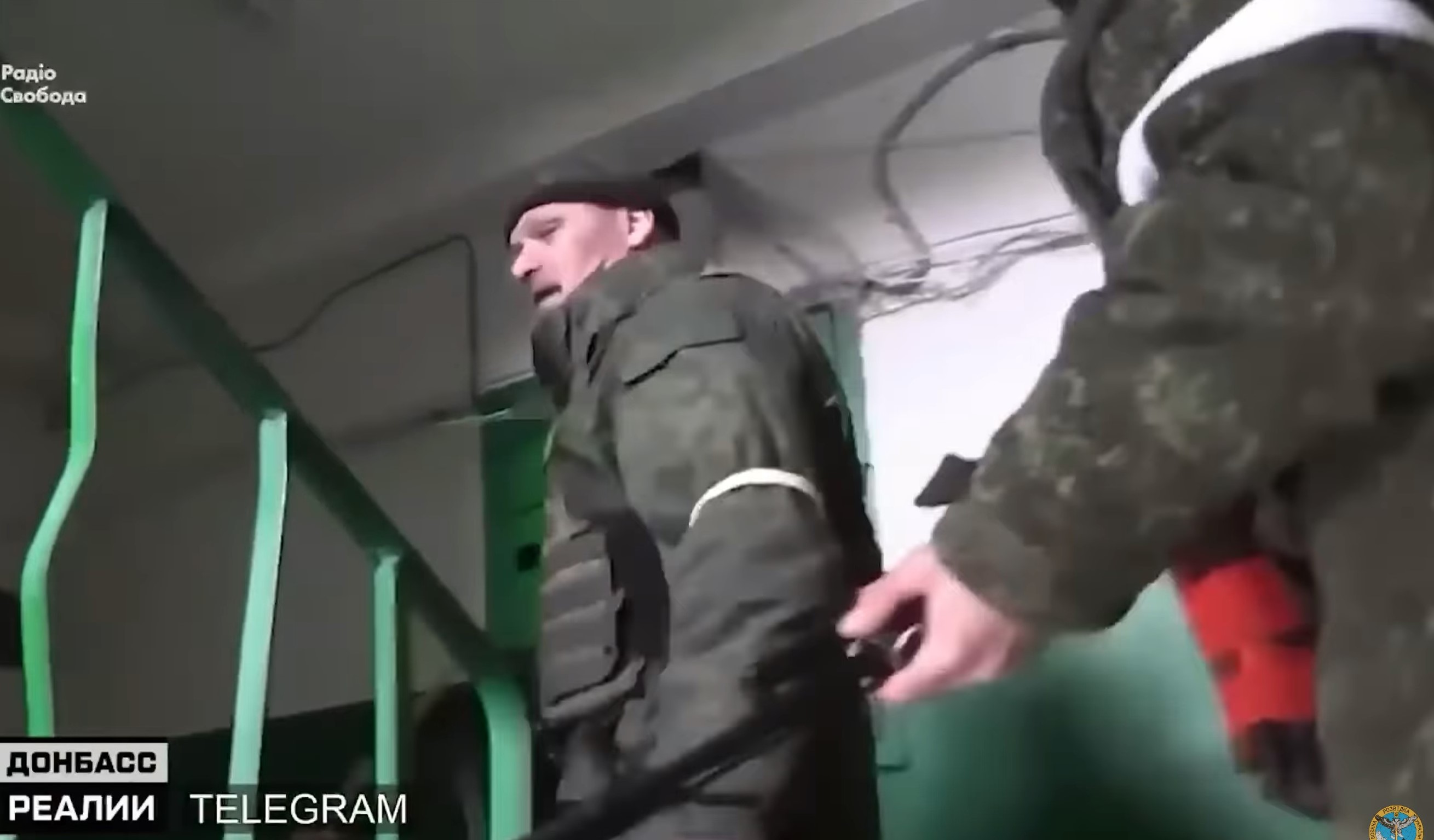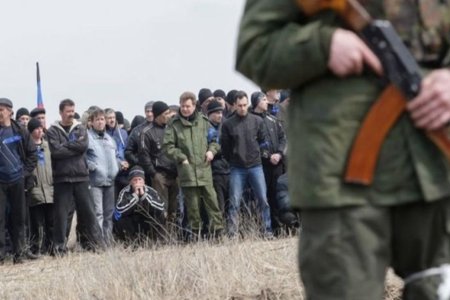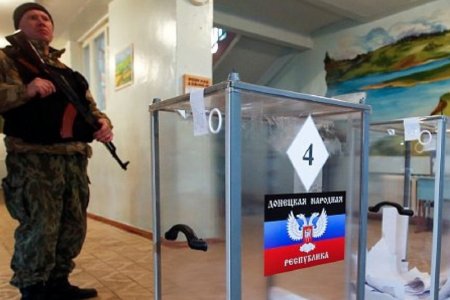
In an interview at the end of July 2023, Andriy Cherniak from Ukraine’s Military Intelligence [HUR] reported that 55-60 thousand men had been forcibly mobilized from occupied Ukrainian territory and sent to the front to fight Russia’s war against Ukraine. Men had been seized on the street or at those few factories, etc. still working, and sent to the front without any training. This was despite being assured that they would be sent to the second or third lines of defence. Cherniak was speaking to Donbas Realities and that figure probably did not include Ukrainians from occupied Crimea who were either illegally conscripted or have been included in Russia’s supposedly partial mobilization announced by Russian president Vladimir Putin on 21 September 2022.
There were reports of forced mobilization from early 2022, and of men, including students, being grabbed from the street, from work or their homes in Russia’s proxy ‘Donetsk and Luhansk people’s republics’ [hereafter occupied Donbas]. In a recent study, News of Donbas pointed to the almost certainly deliberate absence of information about casualties from occupied territory and clearly intentional discrepancy over the upper age limit for forced mobilization.
The claim made about Russia’s ‘partial mobilization’ was that it only applied to reserve soldiers. This would seem to have been a lie and was never the case in occupied Donbas where any men of fighting age were sent. Russia’s proxy ‘republics’ also cancelled any medical examination, with men who should clearly have been exempt for medical reasons, also mobilized.
Russia has gained control of territory in both Donetsk and Luhansk oblasts that were not occupied before 2022 and is almost certainly using similar methods of coercion there. In May, Ukraine’s Deputy Minister of Defence, Hanna Malyar reported that the Russians were carrying out raids in occupied territory with the men they detain being sent to the same field camps as those used to train convicted criminals released from Russian prisoners to fight against Ukraine.
News of Donbas reports, that, judging by local groups on social media, it is virtually impossible for men to secure release from the front even if they are over 50. In such groups, they say that men in this age group have only two ‘chances’ of being sent home – in body bags or if they can prove invalid status, with the latter by no means easy.
Until recently, the upper limit in Russia for mobilization was 55. In the Russian-created and controlled Donbas ‘republics’ it was 50. It has now been reduced to 50 in Russia as well, but was not during the many months when men over 50 were forcibly mobilized from territory that Russia has been claiming ‘joined Russia’ in September 2022. Reference to this in appeals to Putin or the Russian-installed ‘leaders’ of occupied Donbas by the families of men who are not even being released from the front on leave have proven as useless as any other attempts to secure their return home. The only exception appears to have been with respect to students, where appeals, News of Donbas reports, did result in them being returned home.
It is clear from wives’ appeals to Putin, etc. that they don’t know where their husbands were sent and, quite possibly, whether they are still alive. The Russian-installed ‘authorities’ in occupied Donbas provide no information about the number of men from the so-called ‘republics’ killed in fighting. Nor are there any data about the numbers of men who returned from the front and how many remain there.
Apparently ‘DPR’ did publish ‘data about ‘official’ losses’ before 22 December 2022 when all such reports stopped. In fact, such reports and the estimates that Mediazona with the BBC’s Russian Service have made of at least 11,500 military deaths, probably only refer to those officially registered as ‘soldiers’ of the Russian-controlled ‘republics’. They almost certainly do not include those forcibly mobilized. It was widely reported from the beginning of Russia’s full-scale invasion of Ukraine that Russia was using men from occupied Donbas as cannon fodder precisely because they didn’t have to be included in any official statistics.
It was reported in March 2023 that Russia was stepping up measures to mobilize young Ukrainians on occupied territory as soon as they turned 18. Young lads, aged 16 or 17, were being prevented from leaving occupied territory. Young men were essentially being forced into signing contracts and then sent to the front. The same tactics were reported in Russia in 2014-15, with many young lads killed after being sent to Ukraine.
Moscow is almost certainly using its fake ‘elections’ on occupied territory and the accompanying forms of duress used to force Ukrainians into taking Russian citizenship, to impose similar measures on all areas, including in Kherson and Zaporizhzhia oblasts that have fallen under its occupation.
Any form of mobilization or conscription is in violation of international law. Human rights groups have been monitoring such violations and sending evidence of them to the International Criminal Court (ICC) since soon after Russia’s invasion and annexation of Crimea in 2014.
Ukraine’s Prosecutor General’s Office treats any activities aimed at mobilizing Ukrainians to fight Russia’s war against Ukraine as war crimes and has already passed many prosecutions to the courts or is currently investigating cases of involvement in forced conscription or mobilization. These are under Article 438 of Ukraine’s Criminal Code (violation of the laws and customs of war).
There is also a problem with knowing what to do with those forcibly mobilized. It was stated clearly from the outset that any Ukrainian who surrendered would be treated as the victim of Russia’s war crimes, it is by no means easy, however, in a war situation, to surrender with the Russians more than likely to shoot you, or seize and torture you, if they catch you. In recent months, Russia has made it significantly harder to avoid receiving notification of conscription (or mobilization. At present, this applies primarily to occupied Crimea, but it is clear that the same danger will apply to any Ukrainian territory until the enemy is driven out.



